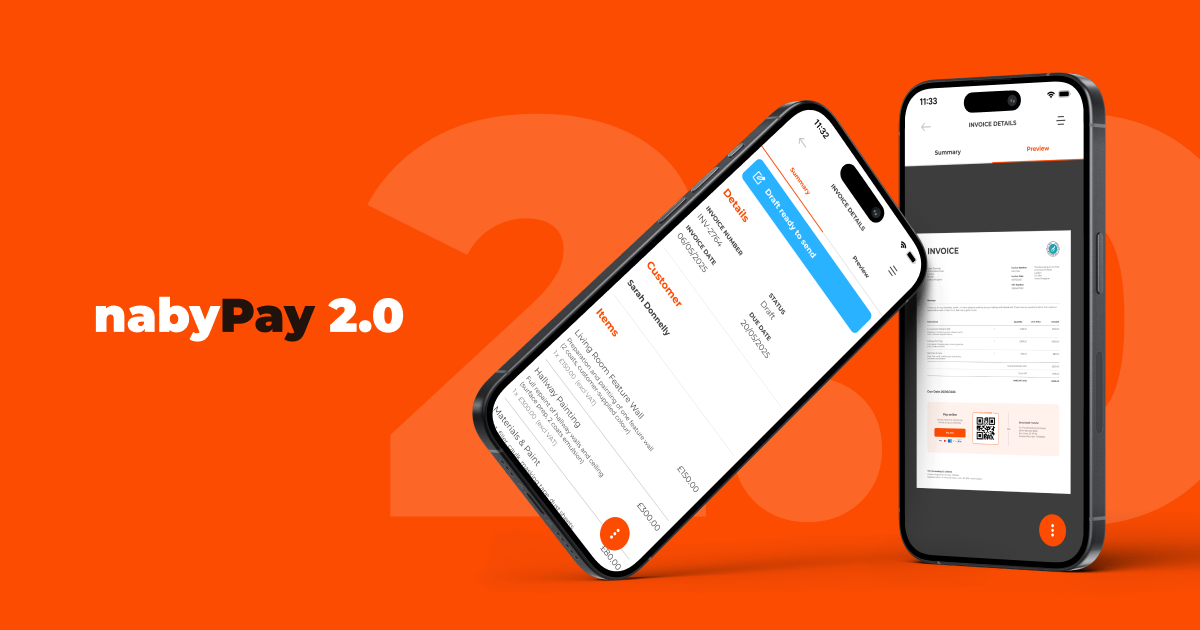Cash-only businesses are becoming a thing of the past. Most customers expect to pay by card or bank transfer, and if you can't accept their preferred payment method, you might lose the job.
Setting up card and bank payments used to be complicated and expensive. Now it's simple, and you can be accepting payments within minutes.
We'll cover:
- Why offer multiple payment options
- Understanding payment methods
- Getting set up to accept payments
- Sending invoices with payment options
- Using payment links
- QR code payments for in-person work
- Payment fees and costs
- Getting paid faster
Why offer multiple payment options
Different customers prefer different ways to pay. Some always use their debit card, others prefer bank transfers, and many want to pay with their phone using Apple Pay or Google Pay.
When you only accept one payment method, you're creating friction. The customer has to go out of their way to pay you, which often means delayed payments.
Offering choice makes payment convenient for customers, which means you get paid faster. It's that simple.
Understanding payment methods
Bank transfers - The traditional method where customers transfer money directly from their bank account to yours. Secure and familiar, but can be slow if customers need to log into online banking and enter your details manually.
Debit and credit cards - Fast and convenient for customers. They can pay instantly using a card they already have in their wallet or saved on their phone.
Digital wallets - Apple Pay, Google Pay, and similar services let customers pay with just a tap or touch. Popular with younger customers and increasingly common for business payments.
Open Banking payments - A newer option that connects directly to the customer's bank account through secure banking APIs. Faster than traditional bank transfers and often cheaper than card payments.
Getting set up to accept payments
You'll need a payment provider that can handle multiple payment methods. Look for one that offers:
- Quick setup without lengthy applications
- Support for cards, bank transfers, and digital wallets
- Competitive transaction fees
- Integration with invoicing
- Mobile-friendly payment pages
With NabyPay, you can start accepting payments immediately. No long applications, no monthly fees, just simple setup and competitive transaction rates.
Sending invoices with payment options
Modern invoices should include multiple ways for customers to pay. Instead of just listing your bank details, include:
- A payment link that accepts cards and bank transfers
- Clear instructions for each payment method
- The total amount due
- Payment due date
When customers can click a link and pay immediately, most will do exactly that. NabyPay invoices include payment links automatically, so customers can pay with their preferred method in seconds.
Using payment links
Payment links are perfect for quick jobs or follow-up payments. Instead of creating a full invoice, you can send a simple link via text, email, or messaging apps.
Use payment links for:
- Deposits before starting work
- Final payments on completion
- Additional charges that come up during a job
- Repeat customers who don't need formal invoices
The customer clicks the link, chooses their payment method, and pays immediately. No account numbers to copy, no forms to fill out.
QR code payments for in-person work
QR codes are ideal when you're working on-site. Generate a QR code for the payment amount, and customers can scan it with their phone camera to pay instantly.
Perfect for:
- Tradespeople finishing a job
- Mobile service providers
- Market stalls and craft fairs
- Any situation where you're with the customer
Customers scan the code, confirm the amount, and pay using their preferred method. The money appears in your account within minutes.
Payment fees and costs
Every payment method has costs, but they're usually much lower than the time and effort of chasing late payments.
Typical costs include:
- Card payments: 2-3% of the transaction
- Bank transfers: Fixed fee of 20-25p
- Digital wallets: Similar to card payments
With NabyPay, you pay no monthly fees and competitive transaction rates. You only pay when you get paid, keeping costs predictable.
Getting paid faster
The right payment setup dramatically improves how quickly you get paid:
- Payment links reduce friction for customers
- Multiple payment options mean fewer excuses for delays
- Instant notifications let you know when payment arrives
- Automatic reminders chase overdue payments for you
Remember, 92% of NabyPay payment requests are paid within one day. When you make payment simple and offer familiar options, customers respond quickly.
Making the switch
You don't need to change everything at once. Start by adding payment links to your invoices alongside your existing bank details. See how customers respond, then gradually expand to QR codes and other methods.
The goal is to make payment as easy as possible for your customers. When paying you is convenient, they'll do it quickly.
Most small businesses see immediate improvements in cash flow after switching to modern payment methods. The setup takes minutes, but the benefits last for years.












